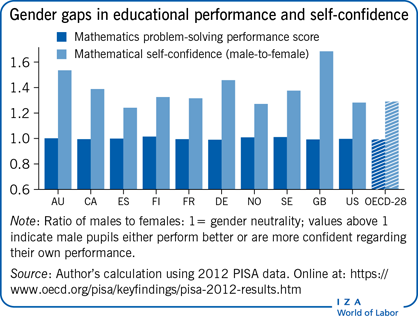Elevator pitch
Differences in labor market outcomes for women and men are highly persistent. Apart from discrimination, one frequently mentioned explanation could be differences in the attitude toward competition for both genders. Abundant empirical evidence indicates that multiple influences shape attitudes toward competition during different periods of the life cycle. Gender differences in competitiveness will not only influence outcomes during working age, but also during early childhood education. In order to reduce the gender gap in educational and labor market outcomes, it is crucial to understand when and why gender gaps in competitiveness arise and to study their consequences.

Key findings
Pros
Gender differences in the willingness to compete are one source for the gap in labor market outcomes.
Empirical evidence indicates that attitudes toward competition are formed early and turn out to be remarkably persistent.
In some instances (e.g. valuation of job characteristics), women might consciously choose to be less competitive, which does not reward direct intervention, per se.
Empirical results show that the gender gap in competitiveness is rather fluid in nature and can be affected when using the right tool.
Cons
The empirical literature finds a significant gender gap in competitiveness in many different settings under multiple circumstances; the main sources and driving forces are still under debate.
Empirical evidence from the field is still scarce, as clear decisions to compete are hard to identify.
Closing the gender gap in competitiveness might not be desirable under all circumstances, as men are often found to be overconfident and over-competitive.
Gender gaps in competition have been found to play a prominent role in (subject) choices for students.